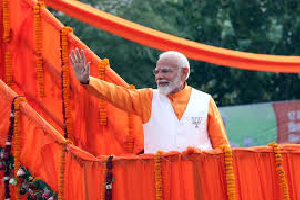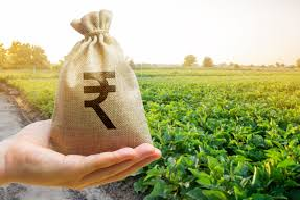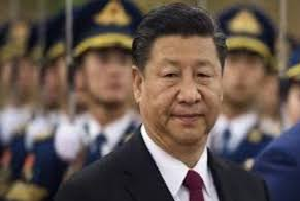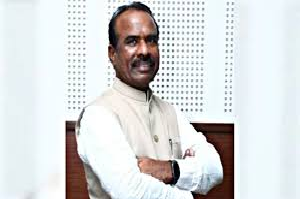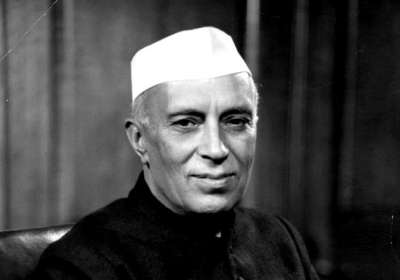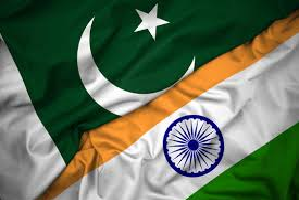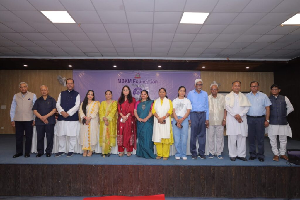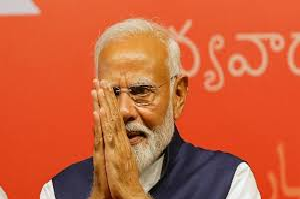22

Prof Shivaji Sarkar
New Delhi | Tuesday | 23 July 2024
The paradox within India's food scenario—where higher agricultural yields year after year coincides with sharp spikes in inflation—demands our attention. While the agricultural sector is poised to grow significantly, with projections estimating its value to reach $24 billion by 2025, the simultaneous rise in food prices poses a challenge. This inflationary trend could hinder India's ability to compete in the global market despite its substantial agricultural output.
India's food and grocery market stands as the world's sixth largest, with retail sales driving 70 per cent of the sector. This robust domestic market reflects both opportunities and challenges. On one hand, increased agricultural productivity has led to notable growth in exports. In the fiscal year 2023-24 (April-December), India's exports of agricultural and processed food products—including marine products, basmati and non-basmati rice, spices, buffalo meat, and sugar—totalled $35.18 billion. This impressive figure underscores India's potential as a major player in the global agricultural market.
However, the rising inflation within the food sector threatens this potential. Higher domestic prices can make Indian products less competitive abroad, as international buyers seek more cost-effective alternatives. The delicate balance between maintaining high production levels and controlling inflation is critical for India to sustain and grow its presence in the world market. If the current trend of rising prices continues unchecked, the agricultural sector's ambitious growth targets could become increasingly difficult to achieve.
The role of foreign direct investment (FDI) in supporting the agricultural sector cannot be overlooked. Between April 2000 and March 2024, the sector attracted $12.58 billion in FDI, accounting for 1.85 per cent of the total FDI inflows across industries. This influx of investment has been instrumental in driving technological advancements, improving infrastructure, and enhancing productivity. However, to maintain and attract further investment, India must address the inflationary pressures that threaten to erode profit margins and market competitiveness.
Addressing this inflationary paradox requires a coordinated effort across multiple ministries and sectors. By stabilizing prices, enhancing productivity, and maintaining competitiveness, India can not only achieve its ambitious growth targets but also solidify its position in the global agricultural market. The Reserve Bank has flagged it to put off interest rate cuts.
During the last six years, the agriculture and allied sectors have been growing at 4.4 per cent per annum. Farm gross value addition (GVA) to GDP is estimated at 19 per cent.
Last fiscal, food inflation, after touching a peak of 11.5 per cent in July started moderating. But the relief was short-lived. The price rise stood at 5.1 per cent in June. Food inflation surged to 9.4 per cent in June, from an already high 8.7 per cent in May. Even the wholesale price index records a rise of 3.36 per cent for the fourth consequent month. The highest spurt, according to the commerce ministry, was noticed in pulses at 21.64 per cent, foodgrains at 9.64 per cent, vegetables at 38.76 per cent, and fruits at 10.14 per cent. Manufactured food products rose by 4.28 per cent. Even milk has become more expensive by 3.37 per cent.
Prices of poultry products, meat and fish marked a fall of 3.06 per cent and oilseed 3.33 per cent.
The kharif foodgrain production is estimated at 154.18 million tonnes, and Rabi foodgrain production is estimated at 155.16 million tonnes. Kharif rice production is estimated at 111.4 million tonnes as compared to 110.5 million tonnes. It is an increase of 9.46 lakh metric tonnes.
The government is targeting to raise fish production to 220 lakh tonnes this year though not easy for environmental reasons.
During the past ten years, the Government has implemented 13 different programmes for improving the agricultural growth prospects and incomes of the farmers, including PM-KISAN of Rs. 18000 per year; an increase in minimum support price (MSPs) for all Kharif & rabi crops ensuring a minimum of 50 per cent of profit margin on the cost of production; crop insurance under Pradhan Mantri Fasal Bima Yojna (PMFBY); creation of infrastructure through Rs 1 lakh crore Agri Infrastructure Fund (AIF); and new procurement policy under PM-AASHA in addition to FCI operations.
These have led to higher production of vegetables envisaged to be around 209.39 MT and fruits to 112.08 MT this year. An increase is expected in the production of cabbage, cauliflower, pumpkin, tapioca, tomato, banana, mangos, and mandarin.
Production of tomatoes is expected to be around 208.19 lakh tonne compared to around 204.25 lakh tonne last year, an increase but tomato prices are surging. Shortage is seen in onion production to 254.73 lakh tonne from last year’s 302.8 lakh tonne. Potato production would be also less than last year at 589.94 lakh tonnes. The shortages lead to a further rise in prices.
Despite claims of record wheat production last year, stock limits were imposed in June 2023. A good wheat harvest followed but again curbs were imposed. It is to be seen as and when Russian wheat arrives how the market reacts. A fall in prices does not appear to be a possibility.
Most agricultural products like onions tomatoes or fruits face this situation. Much depends on the monsoon. Climate change is affecting yields. The heat waves delayed the sowing of kharif crops. Water levels in reservoirs are also low.
As per the third advance estimate, wheat production at 112.9 million tonnes is a record. The government procured 266 lakh tonnes of grain, slightly higher than last year’s 262 lakh tonnes. At the same time, wheat prices are hovering around Rs 2,600 per quintal, against the minimum support price (MSP) for the current year of Rs 2,275. The central pool has 299.5 lakh tonnes as of June 1, 2024, compared to 313.8 lakh tonnes on the same day last year. The free food programme reduced the central pool to 75.02 lakh tonnes, considered low.
Rapid population expansion in India is the main factor driving the industry. The rising income levels in rural and urban areas, which have contributed to an increase in the demand for agricultural products across the nation, provide additional support for this. By this, the market is being stimulated by the growing adoption of cutting-edge techniques including blockchain, artificial intelligence (AI), geographic information systems (GIS), drones, and remote sensing technologies, as well as the release of various e-farming applications.
Still, food inflation inflates prices of every commodity and government expenses. A concerted move to keep it in check is needed for faster growth.
---------------








